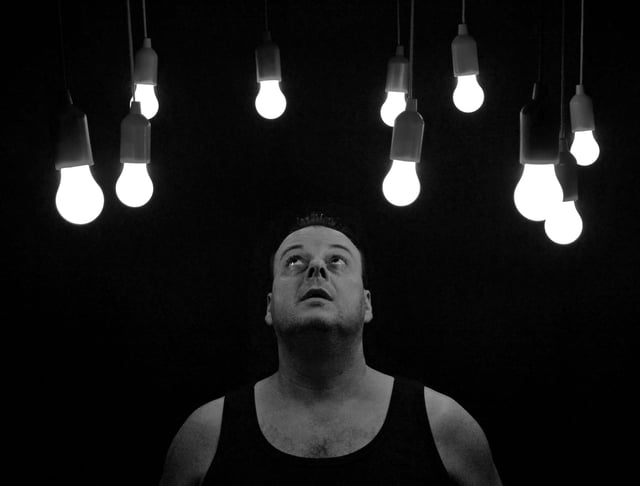
Delivering a speech is one thing—but are you achieving leadership communication? Discover how to 'sing the body electric' and raise your talks from everyday to extraordinary!
Let's talk about congruence. My bedside American Heritage Dictionary defines the word as "agreement or conformity." Simple.
So why can't we as public speakers who lead get our intentions, voices, and bodies to agree?
What isn't so simple—and has implications that are hugely important—is the need to augment the content of what we say with the meaning we intend it to have for listeners. There's only way to make that happen in public speaking: by using our physical expression and emotions to make the material come alive. Today, I'd like to discuss turning on that performance dynamic.
Learn the secrets of speaking with absolute confidence and focus whoever your audience is. For insights on commnicating to lead, download my free e-book High-Impact Speaking: A Leader's Guide to Presenting with Integrity and Influence.
I'm talking about making yourself an electric public speaker for leadership communication.

You Have a Body, So Why Aren't You Using It?
To use the voice, emotions, and physical expression fully is to sing the body electric. That's the title of a famous poem from American poet Walt Whitman's 1855 collection Leaves of Grass. And it's a phrase that works perfectly for this level of public speaking performance.
In his poem, Whitman celebrates the human body—the beauty of observing it, living in it, and grasping its connection to the soul. Here's a line which conveys what I'm talking about when I say the physical is a gateway to the intellectual, and even the spiritual:
To see him pass conveys as much as the best poem, perhaps more
Why should you deprive stakeholders of the fullness and in-the-moment vibrancy that body language can bring to your talks and presentations? You shouldn't; and actually, you can't. The visual you is the one that in-person audiences see. And what you express physically is as vital to what they perceive and believe as anything you say. So, are you switching on (from the audience's perspective) and tuning in (from yours) to the need for physical expression?

Speaking in the Language of the Body
I call this "speaking in the language of the body." It's a means of expression you ignore at your peril as a leader. The amount of the brain's real estate dedicated to visual processing is much greater than that for hearing, and for a very good reason: it's important for survival.
That means audiences are programmed to process what they see strongly and instantly. It's well known that if there's a disconnect between what a person sees and what they hear, they'll go with the visual. The baby step from that realization for speakers who lead, is that you should try to make your gestures and what you say congruent.
But it's deeper than that if you also want to go from everyday to extraordinary: you have to use your body to amplify what your words are saying. (You also have to free your voice's emotional range, which I'll talk about in a minute below.) The language of your mind and the language of your body are not different. That's what experienced speakers know and use. Incidentally, Whitman didn't leave out this thought on his poem celebrating the body, when he talked about:
The voice, articulation, language, whispering, shouting aloud

Lighting Up Your Voice
Body language, then, is powerful in terms of creating influence. But it's a blunt instrument. To finely tune the responses you're trying to elicit in audiences, you need to use your voice—the most flexible and subtle of the communication tools you use in performance.
Words convey the sense of what you're saying; but your voice allows you to create meaning. When I work with executives and leaders to strengthen their public speaking, I'm almost always taking them down the path to more intense emotional expression. And believe me, the results are dramatic in terms of getting across what they really want to say, and the ability of that meaning to come through clearly to listeners.
The voice is produced physically, of course. So it becomes the third element we need to flip the switch for powered-up speaking. As Amy Cuddy says in her book Presence: “If our emotions aren’t reflected in our physical expressions, we don’t feel real.”[1] And I would add: it doesn’t feel real to your audience. We'll assume you'll be speaking on an important topic and that you have solid content at hand. After that, the important equation is this one: Body + emotions + vocal expressiveness = powerful speaking.

The Electric Public Speaker
Now put the pieces together: the visual you, your turned-on voice, and the current of emotions running through what you say. You're ready to sing the body electric in public speaking.
How important is all of this in terms of how people respond to you and your message? I'll let Whitman answer that, from his poem:
O I say these are not the parts and poems of the body only, but of the soul,
[1] Amy Cuddy, Presence (Boston: Little, Brown and Company, 2015), 35.
You should follow me on Twitter here.



